With the recent discovery of Nova Scorpii 2021, three bright stellar explosions are now visible in small telescopes from dusk till dawn.
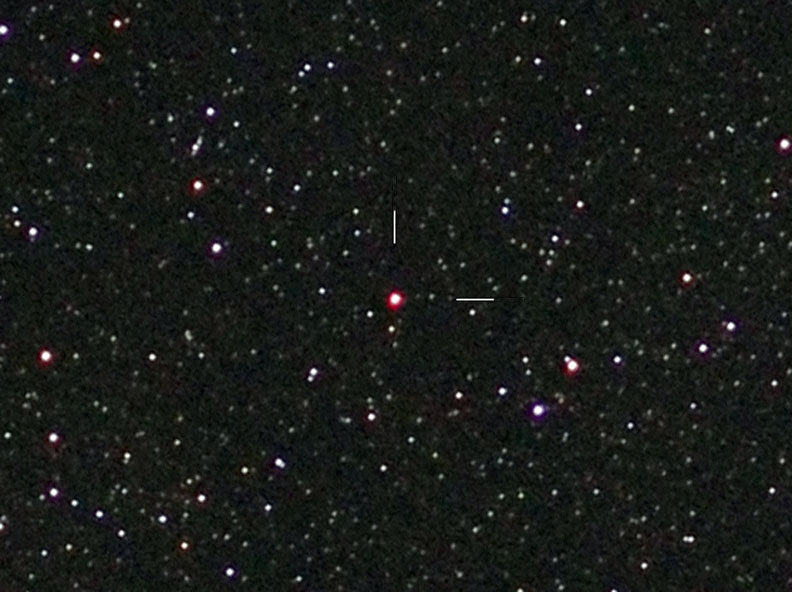
© Rob KaufmanThe new bright nova, V1710 Scorpii, glows conspicuously red in this photo taken on April 14, 2021. It's the third nova discovered in recent weeks that has reached 9th magnitude or brighter.
Wait a minute. Am I going to have to set the alarm and get up at 4 a.m.? Absolutely. And I'll do it without complaint.
Not only are the recent novae in Cassiopeia and Sagittarius still bright at magnitudes at 8.1 and 9.9, respectively, but a brand new nova in Scorpius has just joined the scene. Add in
Comet ATLAS (C/2020 R4), now at magnitude 9.5, and you know in your heart a dawn observing session is in your future.
Amateur astronomer Paul Camilleri of Northern Territory, Australia and the
All-Sky Automated Survey for Supernovae (ASAS-SN) independently discovered the new object early on April 12th at visual magnitude 9.5. Formally named V1710 Scorpii, it brightened quickly to 8.5 before fading slightly, now simmering around 9.5 as of early April 15th. Oscillations like these are common, so the nova might continue to fade or re-brighten just as suddenly.
In an email, Camilleri shared a happy coincidence: "Interestingly, this discovery is my 10th nova, and it was found 30 years to the day of my first discovery in April 1991 and a few days short of my last discovery (April 14, 1993) some 28 years ago."
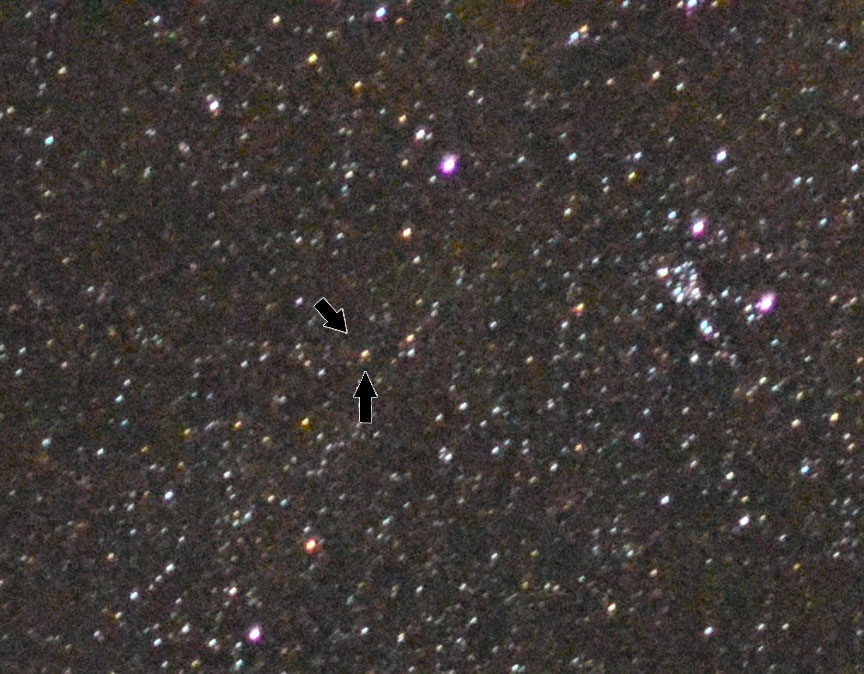
© Paul CamillariThis is Paul Camilleri's discovery image taken on April 12.7625 UT with a Nikon D3200 DSLR and 85mm f/2 lens. The exposure was five seconds at ISO 6400. Since it was made on a tripod without a tracking mount, the stars are slightly trailed.
He noted that the nova had an orange color on his photos, likely caused by emission from ionized hydrogen in the thin, expanding shell of gases ejected during the explosion.
Spectra indicate that the object is a
classical nova, meaning this is its first recorded eruption, and it belongs to the
Fe II class, where prominent emission lines of ionized iron stand out in its spectrum.
IT TAKES TWO TO TANGOA nova occurs when a white dwarf star siphons hydrogen gas from a closely orbiting companion star into an accretion disk, like cotton candy wrapping around a cardboard tube. From there the material spirals down to the dwarf's surface, where it accumulates in an ever-deepening atmospheric layer. When that layer reaches a depth of around 200 meters (650 feet), the star's crushing gravity compacts and heats the hydrogen until it explosively fuses in a runaway thermonuclear chain reaction.
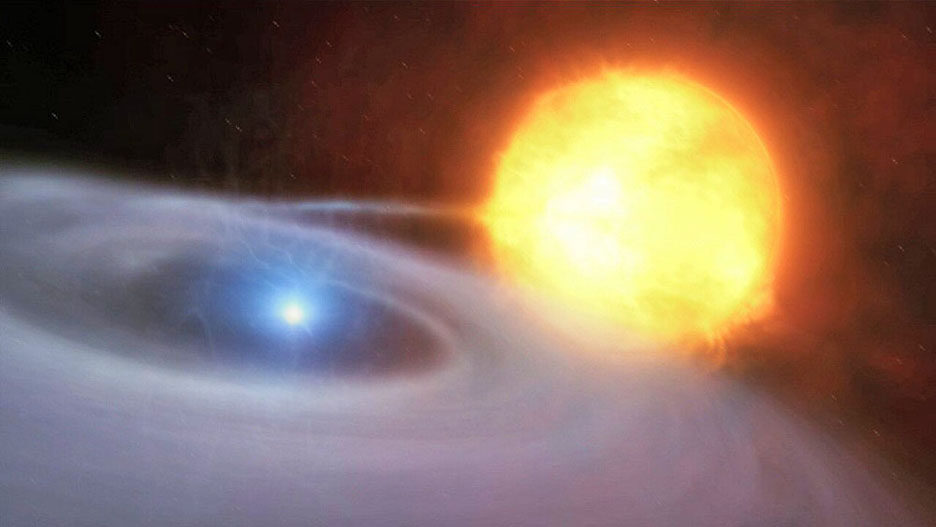
© ESO / M. KornmesserIn this artist view, a white dwarf (left) robs gas from its companion star. The material forms an accretion disk around the dwarf before spiraling down to the surface where it's compressed and ignites in a thermonuclear blast.
The energy transforms the atmosphere into a brilliant fireball that expands into space at speeds up to a couple thousand kilometers a second. To give you an idea of the fireball's size, when Georgia State University's Center for High Angular Resolution Astronomy
observed Nova Delphini 2013 within 24 hours of detonation in August 2013, its diameter was roughly the size of Earth's orbit. Forty-three days later, the gas had ballooned to nearly the size of Neptune's orbit.
In a nova, an otherwise obscure star system can brighten up to 15 magnitudes overnight, becoming visible in binoculars or even to the naked eye. The brightest of these achieve a luminosity 50,000 to 100,000 times that of the Sun. Nova eruptions, while catastrophic, leave the binary intact, allowing the white dwarf to resume its wily ways once the eruption subsides.
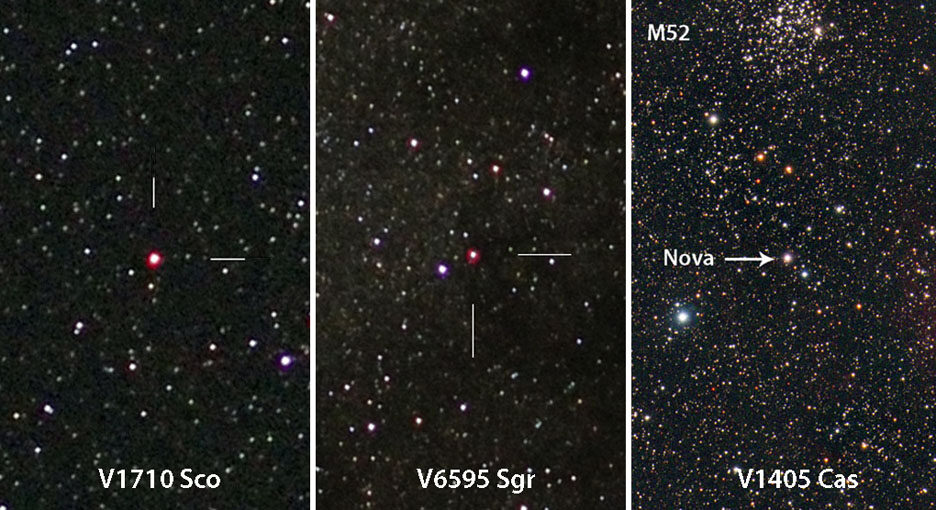
© Left, middle: Rob Kaufman; Right: Dennis di CiccoThe three explosions keeping amateurs on their toes these nights are best seen in sequence just before dawn. There's also a 4th nova, V6594 Sagittarii (discovered on March 25, 2021), but it's currently fainter at about 11th magnitude.
Later, as the fireball cools and expands and the nova fades, the expanding shell enters a
nebular phase, in which it glows with the light of doubly ionized oxygen (OIII), the same light emitted by planetary nebulae. This stage can occur a month or more after the initial blast and is worth watching for. You'll know the shell has thinned out when the nova behaves like a small planetary and pops in brightness when you "blink" it with an OIII filter. I still find it amazing that you can see this physical transformation with little more than a filter and modest telescope.
TICKET TO RIDE
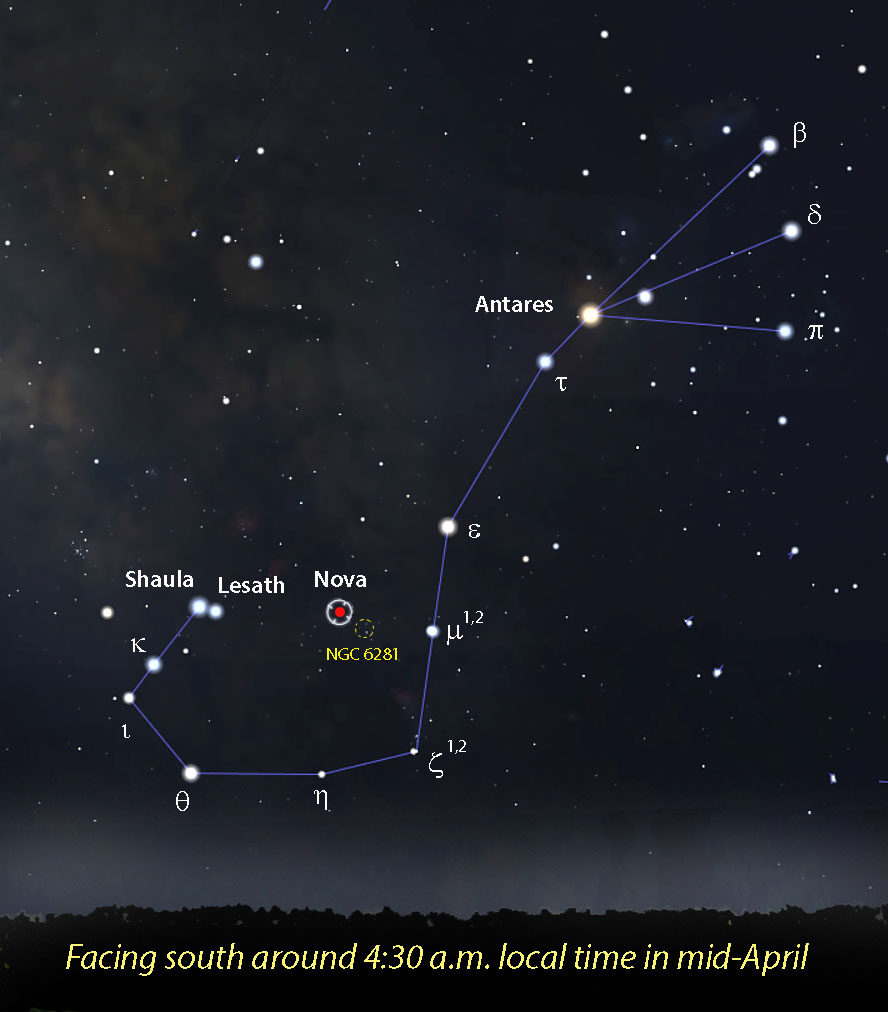
© StellariumTo find the nova, first locate Mu1,2 (μ1,2) Scorpii, then sweep 2.5° east to the small, bright open cluster NGC 6281. V1710 lies just less than 1° northeast of the cluster. Use this AAVSO map below to pinpoint its location.
The field of the nova is easy to locate 3.2° east-northeast of 3rd-magnitude Mu1,2 (μ1,2) Scorpii at R.A. 17h 09m 08.1s, Decl. -37° 30' 40.9". It's not quite halfway between Mu and the
Stinger Stars, Shaula and Lesath, at the end of the arachnid's tail. Don't let the low declination put you off. From 40° north latitude V1710 Sco stands about 12° high around 4:30 a.m. local time, when it culminates in the southern sky.
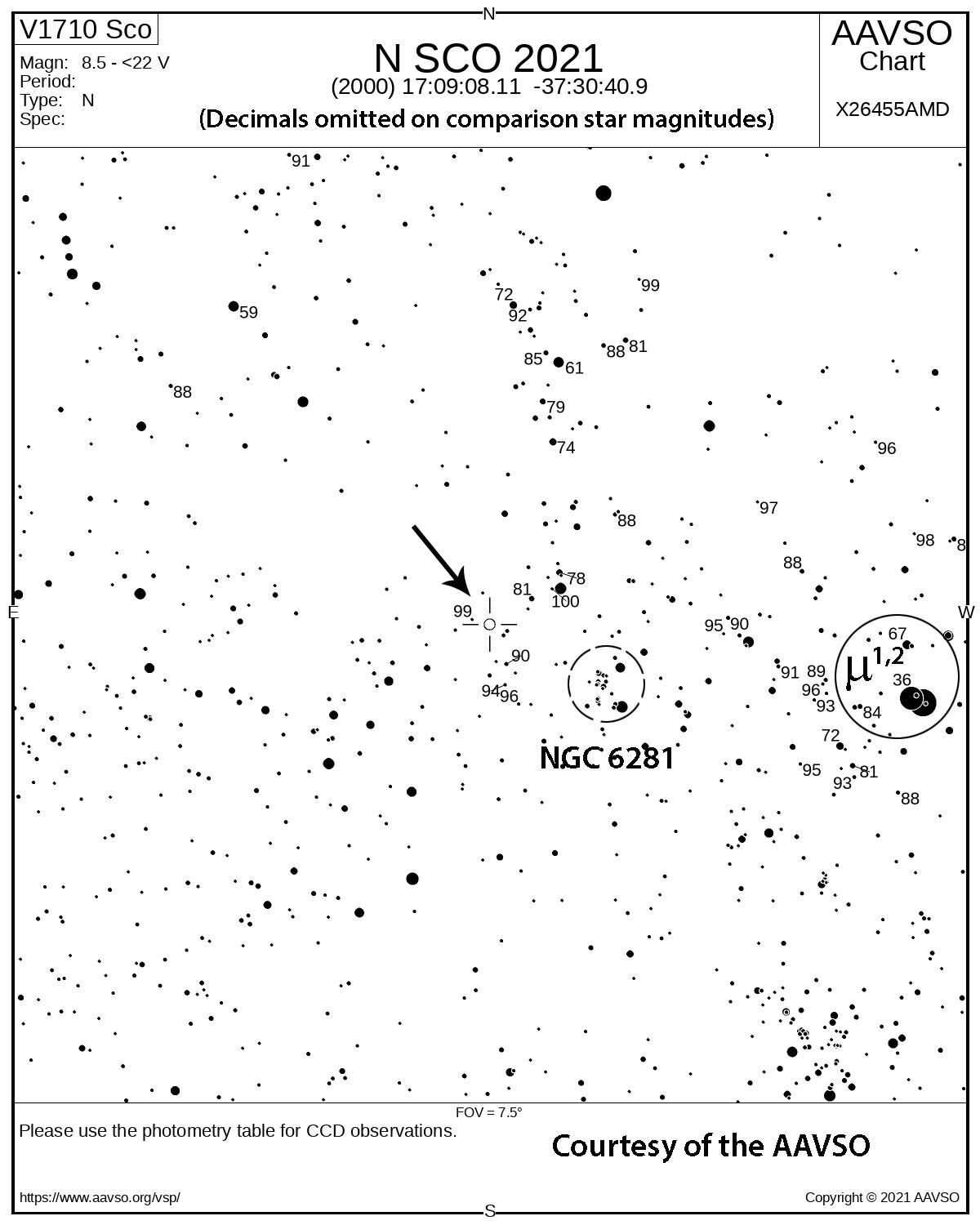
© Courtesy of the AAVSO with additions by the authorThis detailed map shows the nova's exact location. I've highlighted key bright objects shared with the Stellarium map.
With an unobstructed view in the southeast-south direction it's bright enough to spot in a 4-inch scope. Even in the northern U.S. where the star squeaks by at an altitude of 5-6°, it's still reachable. Just remember to bring knee-padding if you're using a reflector!
You can keep track of all three novae by visiting the site of the
American Association of Variable Star Observers (AAVSO). Simply type in the object's name in the
Pick a Star box — V1710 Sco, V6595 Sgr or V1405 Cas — and click for a list of recent brightness estimates, a light curve or to create a customized star chart. One last bit of advice: Try to get to bed early!









R.C.
(Sorry Parzival. )
RC